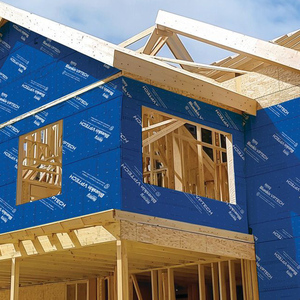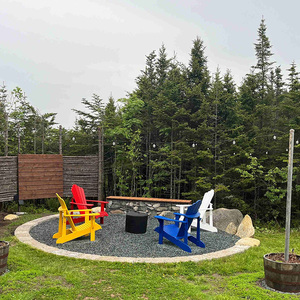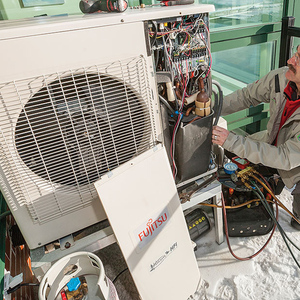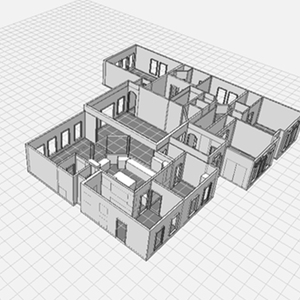Electrical Q–30A laundry circ., ground
I’m moving the washing machine a few feet and need to extend the wire to the outlet. It’s a 30A, 240V circuit (I assume 240 because it’s fed from a double pole breaker) that the electrician ran with 10/3 wire with no ground–red, white, black, that’s it. The wire I’m using is 10/3 with ground (because I have it) and the box I’m making the underfloor junction in is metal.
My practical question is what to do with the ground wire in my 10/3g? It does not appear that this circuit grounds the equipment back to the panel. Should I replace the whole run of wire or somehow add a ground (I could steal one from another nearby J box)? There is no terminal on the appliance receptacle for a ground wire.
My theoretical question is why no ground for the washing machine?



















Replies
Hi Dave,
look on the face of the plug or receptacle do you see a number ...5-30, or 6-30, 7-30, 0r 10-30 if you do, than you definitly have a 2 pole 3 wire circuit .... that is 2 hots and a ground the existing circuit is fine and by the way that must be one big washer!
maddog
Edited 4/26/2004 7:45 pm ET by maddog
as far as i know, no domestic washing machine requires 240 volt
all that i have ever seen just require a regular 15 a 120 v circuit preferably on its own circuit
now driers on the other hand unless gas powered are a different story
then we're talking 240 volt with a 30 amp double breaker and cable to suit
caulking is not a piece of trim
My guess is you're talking about the dryer, not the washer.
Given the opportunity, you should replace all the wire all the way back to the panel with 10/3wg and install a 4-prong plug and new 4-prong pigtail on the dryer, to bring everything up to current code.
Sorry fellas, major omission, it's a washer/dryer stacked unit. I said washer because moving the plug took 5 minutes while moving the pipe took 5 hours. So, take 2, one unit, washer/electric dryer. Duh.
Agree with Dan and add that when you go to 4 wire, be sure to remove any bonding strap inside the machine between the neutral [white] terminal and the machine frame.
~Peter
why does he have to change the cord on the unit ? didn't this thing come wcord from the factory? if it is not 4 wire why is he changing the manufacturers equipment?
Most dryers and ranges don't come with cord sets. You either add your own or hardwire them.
Up until 1996 the NEC allowed 3 wire connections for dryers and ranges in many applications. But mobile homes required 4 wire connections and many cities also required 4 wire connections.
For a long time (maybe 20-30 years) manufactures setup their equipment to be connected to either. Most will have the details on a label on the back or stamped on the metal.
Typically they will have 3 terminals for the 2 hots and neutral. Then a strap or jumper wire that can connect the chassis to the neutral for a 3 wire installation. For a 4 wire remove the strap/jumper and connect to the ground wire to the chassis.
more of a comment : I've got a Asko washer/dryer set that is on a 30A 3 wire, washer plugs into the outlet and the dryer plugs into the washer. HOT, HOT, GROUND/NEUTRAL.
Appliances that are pure 240V need no neutral and will be hot/ground/hot. No modern appliance built to US standards should require hot and ground bonded.
Even if the current appliance requires no neutral, it makes sense to install a 4-wire cable back to the panel, since the appliance may be replaced in the future by one that needs a neutral.
Gentlemen, this has been most informative, thank you.
There's a wire clamp on the back of the machine for the cord set--looks like an oversized romex-->box connector. There's a removable panel over the connections, which are on a large plastic terminal block. There are three connections only. The middle of those three has a small metal strap that jumps over to the chassis. That's the strap to remove if using 4-prong, I presume.
Over on the opposite side of the back of the machine there's a threaded hole with the words 'ground wire' stamped next to it. Looks like a green ground screw would fit.
Given that the pigtail terminal block only has three terminals, where's the ground go if I get a 4-prong pigtail? Use a jumper wire? Arrange the pigtail so the ground goes across the back(doesn't seem likely). I don't have the instructions (machine came with the shack) and realize you can't see it from your house... I will check online for manuf. info.
Edit: our last washer/dryer set was Asko. Man did I love that thing. Small, efficient, made its own hot water, fit under a counter. A pair of jeans would last years in nice condition. Had to sell it with the house, and compared to that, this Maytag top loader we now have is heinous, like wrapping your clothes around a big screw. Unfortunately there's no justification for tossing a fairly new unit and replacing it, but when it busts we're going back to Asko.
Edited 4/27/2004 1:10 pm ET by davidmeiland
"There are three connections only. The middle of those three has a small metal strap that jumps over to the chassis. That's the strap to remove if using 4-prong, I presume."
Yes,
Typically there is a screw or threaded stud that connects the other end of the strap. That screw/stud is then used for the ground wire.
> There's a wire clamp on the back of the machine for the cord
> set--looks like an oversized romex-->box connector. There's a
> removable panel over the connections, which are on a large plastic
> terminal block. There are three connections only. The middle of those
> three has a small metal strap that jumps over to the chassis. That's
> the strap to remove if using 4-prong, I presume.
Yep, and normally you'd be able to attach the ground where the strap attaches to the chassis, or to some other point in the near vicinity.
OK Bill, but if the unit has no terminal for the ground what does a fella do? I seem to recall running a ground from the frames of these things around the vent pipe for the dryer but that was years ago! According to dave I read it that his cord and receptacle are 2 pole WITH a ground so to me that sounded like there is a transformer inside the thing, NEMA has configs. for non-locking 30A 240V circuits
Separting the ground and neutral as part of your re-wiring is appropriate, and it sounds like the way to "de=bond" the neutral from the machine chassis is clear enough. The ground wire can be attached to the metal chassis of the machine at any convenient place: you can drill a hole in the chassis in the machine junction box if necessary, and attach the ground with a green self-tapping grounding screw.
The neutral is a current carrying conductor, and should only be bonded to the ground at the power source, to avoid the possibility that the ground will turn into the neutral conductor (if the neutral is somehow interrupted). The neutral is necessary because there are probably 110v. portions of the washer/dryer (e.g., a clock, or lights, a convenience receptacle) as well as 220v. to run the heating element and probably the motor. So wire it with 10/3 w/g, and a four wire pigtail.
As he describes it he has 2hots and a neutral (the 3 terminals) and then the case strapped to the neutral.
That uses a NEMA 10-30R 240/120 without a ground.
The newer 4 wires installations 240/120/ w/grnd uses a 14-30R.
A 240 only w/grnd would use a 6-30R
http://www.networkcable.com/pages/components/nema_nonlocking.html
I don't know of any dryer or stove that uses 240 only. There might be some, specially European imports, but I would think that even so they would be wired up with a neutral terminal so that they can be installed using the 10-30/14-30 are are going to be installed in most homes.
I added a four prong pigtail, and connected the ground terminal to the screw that formerly held the chassis end of the neutral-chassis strap (removed). This screw is farther from the cable clamp than the three main terminals, so I had to dress the wire in loops to get everything tied down, but it's in there securely and without kinks, bends, etc. The manufacturer didn't plan ahead for this, but it's done. My continuity tester shows continuity between the chassis of the machine and the metal box I roughed the receptacle into. Plus, I did three loads of laundry, so I know it works.
This was a nice project-within-a-project. New washing machine box with copper supply and a single-lever shutoff, recessed into the wall (replaces ugly surface mounted CPVC with plastic irrigation valves). New 2" standpipe with a 1-1/2" vent thru the roof (replaces a surface mounted 1-1/2" standpipe that had no vent). New alumiflex vent thru the floor and out the sidewall (formerly no vent). New electrical. The former owner of this house had a handyman who did hideous work.
Next phase is to plumb in a Takagi TK2 so that I can remove the 40 gallon tank that's standing next to the laundry, in the way of my future 30x24x96 storage cabinet. I can hide a lot of my wife's stuff in a cabinet that size.